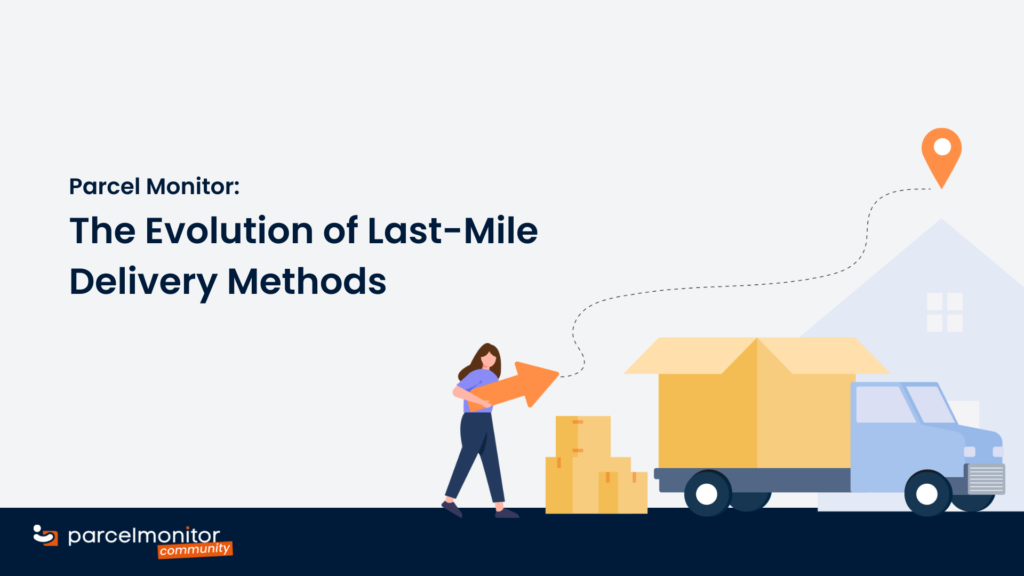The demands of customers today are escalating at an unprecedented rate. On top of quick and accurate order fulfillment, they are also calling for transparency and frequent updates about their package whereabouts without having to foot additional charges. In one of its recent articles, Parcel Monitor has taken a closer look at the development of last-mile delivery, discussing how technological advancements have led to the emergence of some of the more unconventional techniques.
Defining the last mile
The ‘last mile’ of the e-commerce supply chain is where parcels are physically delivered to the shoppers, creating a real connection between businesses and customers. Orders are carried from a warehouse or distribution center and then delivered to a customer’s residence, place of work, or parcel locker. As its name implies, last-mile delivery helps to ensure that every shipment reaches its final destination in a safe, prompt, efficient and sustainable manner.
The traditional route: home deliveries
Parcel Monitor’s data revealed that customers still choose the typical doorstep delivery option in several locations, with Latin America and Africa recording the highest percentages of uptake at 99.4% and 98.3%, respectively.
The research also showed that both North America and Asia have a strong preference for home delivery services. In fact, these locations are known for their quicker parcel transit times for first-attempt delivery. For instance, Singapore’s average transit time to the first-attempt delivery of a package was only 1.5 days post-Covid (1.3 days pre-Covid).
Shift toward unconventional delivery
Alternative package delivery methods are becoming more popular among businesses to maintain competitive pricing and strong service standards. In tandem with the booming e-commerce sector, package deliveries are expected to reach US$665bn in market value by 2030. As a result, companies have begun utilizing unconventional delivery methods to fulfill their orders, some of them being motorcycles, skateboards, and even drones.
#1 Collection points
Collection points allow consumers to pick up orders from a location of their choice, at their convenience. Customers can choose a preferred collection point during checkout instead of specifying a delivery address. When the order is ready for pickup, consumers will then receive a notification from the relevant retailer or carrier.
#2 Curbside pickups and in-store collections
Customers who use the curbside pickup option can pick up their orders from a convenient place rather than having them transported to their homes. ‘Buy online, pickup in store’ (BOPIS) – also known as click and collect – and curbside pickup operate quite similarly. First, the buyer places an order on the website and specifies where and when they want to pick it up. The merchant will then prepare their order and notify them that it is ready for pickup after receiving the customer’s order details. The client then shows up to pick up their order.
It is obvious why curbside pickup is a much safer choice for customers since it minimizes their contact with people outside of their immediate family, particularly during a pandemic. Additionally, it is faster, more reliable, and less stressful. As a result, it can more easily satisfy customer demand.
#3 Drones and robots
Aerial drones already account for more than 61% of the market for autonomous last-mile delivery, which is expected to grow at a phenomenal CAGR of almost 19% over the 2021-2031 period. Drone delivery of e-commerce purchases, food, and even medical supplies has become commonplace in recent years.
Robotic autonomous couriers are a viable alternative to traditional delivery trucks and vans. Like their aerial drone equivalents, these machines are available 24/7, taking orders whenever they come in and even waiting for clients if necessary. Costs associated with labor and logistics are eliminated. In addition, compared to their equivalents fueled by fossil fuels, electric vehicles, drones and delivery robots are far more environmentally benign. Recent studies have shown that employing drones instead of trucks for short distance activities can reduce emissions by up to 54%.
To check out the full article on the Parcel Monitor website, click here.


